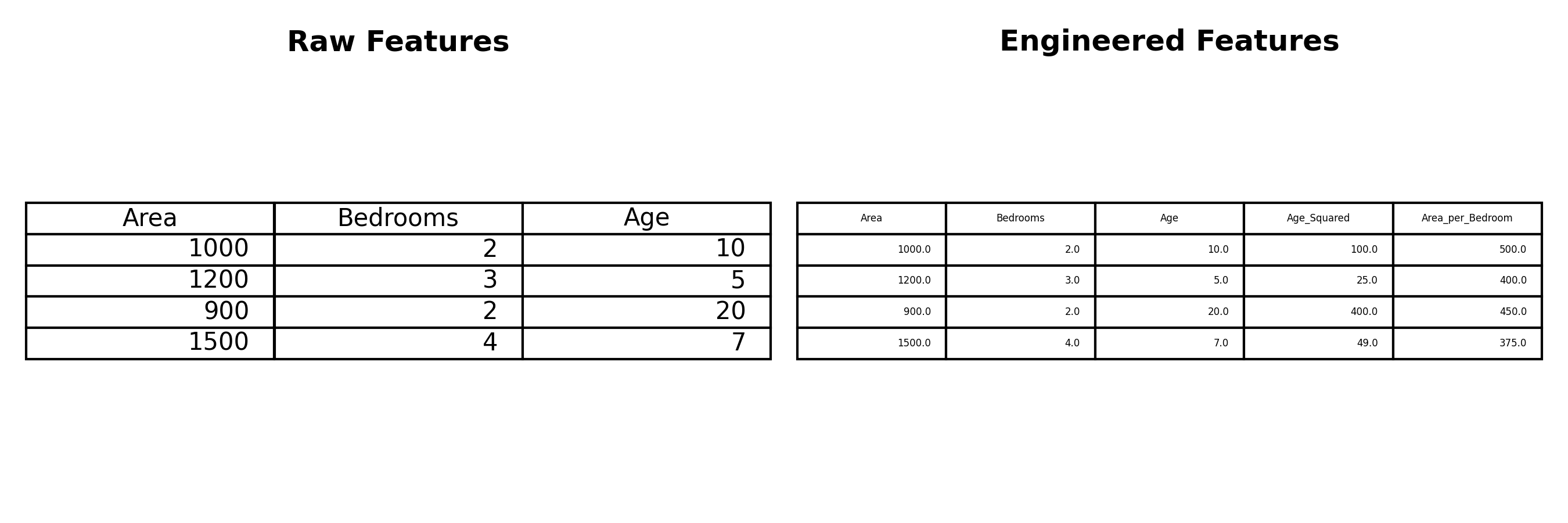AI Insights: The Power of Feature Engineering (No Code)
Posted On: July 15, 2025 | 2 min read
When it comes to building a great machine learning model, the algorithm often gets all the attention. But there’s a lesser-known hero behind model performance: feature engineering. In fact, many experts believe that feature engineering has a bigger impact on model accuracy than the choice of algorithm itself. 🤖
What is Feature Engineering?:
Feature engineering is the process of transforming raw data into meaningful inputs for a machine learning model. This could involve creating new features, converting categorical data into numerical form, or extracting useful patterns from existing data.
Why It Matters:
A model is only as good as the data you feed it. Even the best algorithm cannot learn useful patterns if features are irrelevant, incomplete, or noisy. Well-engineered features often mean:
- Higher accuracy without changing the model.
- Better interpretability (easier to explain results).
- Faster training with more meaningful data.

Figure: Raw dataset transformed into engineered features
Common Feature Engineering Techniques:
- Handling Missing Values: Filling or removing missing data to maintain dataset integrity.
- Encoding Categorical Variables: Converting text labels (like “Red”, “Blue”) into numerical values using techniques like one-hot encoding.
- Scaling and Normalization: Ensuring numerical features are on a similar scale.
- Feature Creation: Deriving new features, like creating an “age group” column from an “age” column.
- Dimensionality Reduction: Reducing feature count while preserving information (like PCA).
Real-World Example (Conceptual):
Imagine predicting house prices. Raw data might include features like square footage, number of bedrooms, and zip code. Feature engineering might involve:
- Creating a feature like price per square foot.
- Encoding zip code into a location score.
- Combining bedrooms and bathrooms into a room index.
These steps often improve model performance more than simply changing the model from, say, linear regression to a neural network.
Conclusion:
Feature engineering is the hidden power behind most successful AI systems. While algorithms are important, the features you create and select often make the biggest difference. Mastering this skill is a must for anyone serious about machine learning. 🚀

No comments yet. Be the first to comment!